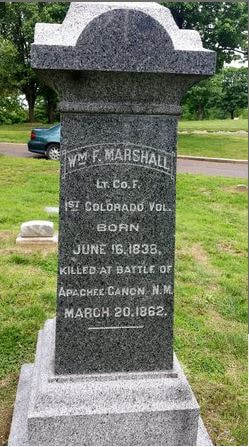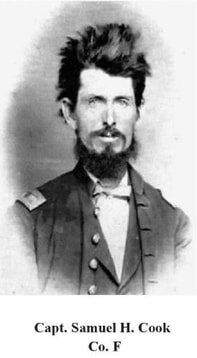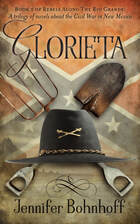William Marshall: A Case Study in the Difficulty of Writing Accurate Historical FICTION
 Historical fiction, when written well, has equal parts truth and fiction to it. It not only tells a good story, but helps readers understand a period in time. One of the most interesting and satisfying parts of writing historical fiction is researching the history and portraying it accurately. This can also be one of the most frustrating parts of writing historical fiction, especially when readers point out inaccuracies and anachronisms that in a work. It's happened to me many times. Sometimes the reader is wrong, like the editor who told me that there were no Germans in France during World War II. More often, though, they are right, and I have slipped something in that isn't accurate. Sometimes, however, the problem isn't with a misinformed reader or a gaffe on my part. Sometimes the problem goes farther back than either the writer or the reader. Such is the case with the cause of death for William F. Marshall. There are parts of William F. Marshall's story that we do know. We do know, for instance, that he was elected by the men in Company F of the Colorado Volunteers to the position of 2nd Lieutenant. Several of my readers have questioned this, but it is true that companies elected their officers during this period. We know that he was not universally liked by his men. Some diaries left by men call him imperious or haughty. Finally, we know that he was the last man to die during the Battle of Apache Canyon, the first day and portion of the Battle for Glorieta Pass.
Historical fiction, when written well, has equal parts truth and fiction to it. It not only tells a good story, but helps readers understand a period in time. One of the most interesting and satisfying parts of writing historical fiction is researching the history and portraying it accurately. This can also be one of the most frustrating parts of writing historical fiction, especially when readers point out inaccuracies and anachronisms that in a work. It's happened to me many times. Sometimes the reader is wrong, like the editor who told me that there were no Germans in France during World War II. More often, though, they are right, and I have slipped something in that isn't accurate. Sometimes, however, the problem isn't with a misinformed reader or a gaffe on my part. Sometimes the problem goes farther back than either the writer or the reader. Such is the case with the cause of death for William F. Marshall. There are parts of William F. Marshall's story that we do know. We do know, for instance, that he was elected by the men in Company F of the Colorado Volunteers to the position of 2nd Lieutenant. Several of my readers have questioned this, but it is true that companies elected their officers during this period. We know that he was not universally liked by his men. Some diaries left by men call him imperious or haughty. Finally, we know that he was the last man to die during the Battle of Apache Canyon, the first day and portion of the Battle for Glorieta Pass.
 Historical records provide us the names of both the first and the last man shot in the Battle of Apache Canyon. The first was the company's captain, Samuel Cook, who received a buck and ball wound to the thigh. He continued to fight and was injured several times before being carried off the field. He recovered from his wounds.
Historical records provide us the names of both the first and the last man shot in the Battle of Apache Canyon. The first was the company's captain, Samuel Cook, who received a buck and ball wound to the thigh. He continued to fight and was injured several times before being carried off the field. He recovered from his wounds.William Marshall was not so lucky. We know that he was the last man shot on that fateful day. We know that he was carried to Pigeon's Ranch, where a hospital had been established. We know that he died early in the morning of the next day. But the details of his death are sketchy.
The reason the details are sketchy are that the sources we have for this battle are largely military reports or the memoirs of those who were there. Military reports may be very good at telling us who was on the right flank and who led a particular assault. They tell us who died, but they don't include the particulars of that death. Memoirs often tell the particulars, or at least what the veteran who wrote them remembers. One source that I read said that Marshall was supervising the destruction of confederate arms abandoned on the battlefield when he picked up a rifle by its muzzle and hit it against a stump in order to bend the barrel. The gun discharged into his stomach and he died just before dawn of the next day. However, another account tells it differently. According to this man, Marshall took a handgun from a Texas prisoner when it discharged in his face. Face or stomach? Handgun or rifle? While a writer may never be sure, he or she had to choose one story or the other to include in his or her work of historical fiction.
 William Marshall's death is part of the story that Jennifer Bohnhoff includes in Glorieta, book two of the series Rebels Along The Rio Grande, which tells the story of the Confederate invasion of New Mexico. A New Mexico native, she hopes she chose the right set of circumstances for the 2nd Lieutenant's death.
William Marshall's death is part of the story that Jennifer Bohnhoff includes in Glorieta, book two of the series Rebels Along The Rio Grande, which tells the story of the Confederate invasion of New Mexico. A New Mexico native, she hopes she chose the right set of circumstances for the 2nd Lieutenant's death.
Published on March 30, 2020 00:00
No comments have been added yet.



